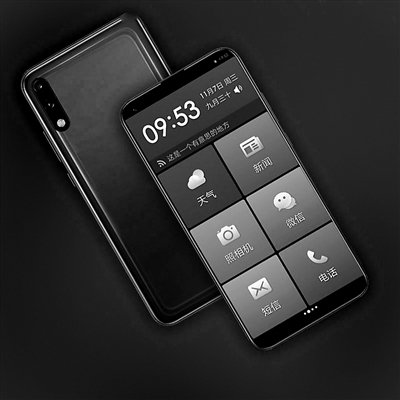SmartPhone For Old Generation Simplify the system’s “elderly machine” to solve the pain points; in response to the “difficulties” of the elderly during the pandemic, the new products of mobile phone manufacturers can call up health treasures with one click
While helping the elderly to bridge the “digital divide” has become a hot topic, the field of smart phones for the elderly has also received more attention. In just half an hour in the early morning of November 11, 5G mobile phones and gaming phones on the JD platform ushered in breakthrough growth. Among them, the turnover of mobile phones with the keyword “elderly mobile phone” as the keyword increased by 185% year-on-year.
The elderly are susceptible to anxiety and frustration with smart phones
Studies have shown that the main difficulties faced by the elderly in using smartphones are as follows: First, the elderly tend to feel anxious about using new technologies. Although the elderly are very willing to contact and learn to use smart devices, in actual use, they are always worried that they will misuse or damage the product, which will cause anxiety.
The second is that the physiological function decline caused by aging does not match the current intelligent technology mainly for young people. Older people have certain psychological and physical limitations, and they are prone to problems when they interact with products. For example, the touch interface of a smart phone is visually oriented and lacks physical feedback, which makes it easy for the elderly to make mistakes when using it, which creates a sense of frustration.
Industry insiders believe that, on the whole, the acceptance and mastery of technology by the elderly in China is higher than that in the West. For example, many elderly people in China use smart phones and use WeChat. Most smartphone needs can be solved by using Facebook alone. Compared with touch screens, older people who will be the next generation of “touching the Internet” are more inclined to provide physical feedback and touch with physical buttons; at the same time, they are not adapted to more complex software interfaces and ubiquitous links, In the pop-up window, it is recommended that mobile App developers set up an “entrance” for the elderly, which is similar to the parent mode, giving special groups of people a more concise and simple entrance, permissions and interface.
Simple mode system designed for middle-aged and elderly people
Currently on the market, mobile phones targeting the elderly or mobile phones with the keywords of “elderly phone” and “elderly phone” are precisely solving these pain points.
Some models of Huawei Imagine and Xiaomi Redmi are equipped with simple mode or minimalist mode, designed for middle-aged and elderly people. This mode has a more concise interactive interface. The 6-inch screen on the homepage is covered with the 6 most commonly used icons of weather, news, camera, Whatsapp, SMS, and phone, so you don’t have to worry about pressing the wrong location. You can also set to make a sound when you press a key, such as reading out the dialed phone number, reading text messages, etc., with large fonts, making it more friendly to elderly friends with impaired vision.
A student machine of the Xiaomi Eco-Chain is also favored by the elderly. It not only has simplified functions, but also has a built-in voice assistant that can be used to control various information such as time, weather, and news.
The Meizu 17, which is positioned as a student phone, can quickly become an elderly phone by turning on the simple mode of large characters. The family guardian function is also suitable for the elderly, mainly including anti-fraud, finding family members, remote assistance and other functions. If the guarded mobile phone receives a suspected fraudulent text message or call, it will notify the host, and the host can identify it and block it.
The new “Elderly Machine” can call up the health code with one key
At the same time, Nokia and Philips have also launched a combination of traditional and modern key-press smart phones, joining the “old phone” camp. This type of mobile phone adopts the Android smart system, the dual operation of touch screen and buttons, which is more friendly to some elderly people who are more adapted to traditional mobile phone typing methods.
For example, the Nokia C3 mobile phone released recently has solved the problem that the media has been calling for since the pandemic this year: the health code can be called up with one click. Although it is a low-end entry-level product, it is sufficient to meet the basic “digital” needs of the elderly. The “Xpress button” on the left side of the mobile phone can call up functions such as commonly used software, video news, health code, etc., without requiring the elderly to learn complicated operation steps, and can be accessed directly with one button. Elderly people are accustomed to carry cash with them when they go shopping.
The reason is that they don’t use mobile phones to pay. The “Xpress button” also solves this problem perfectly, allowing the elderly to make mobile payments easily. You can call up the payment page by double-clicking the “Xpress button” and use the rear fingerprint recognition to pay. The elderly do not need to find the payment software or enter the password, which is simple and practical.
In addition, iPhones with fewer buttons are also popular among the elderly. Operations such as exiting and switching apps only need to press the Home button a few times, which can reduce some misoperations accordingly. However, in recent years, the iphone system has been updated, and its functions have become more and more cumbersome, and its friendliness to the elderly has also declined year by year.



